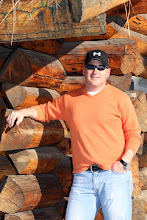The reason I am drawn to use 'Iditarod' as a metaphor for leadership is that I love the story of what the race commemorates. It embodies a majority of how I approach life and business. It's one of the summary points in Chapter 9 of the book: "Life is lived best when it's lived for others."
In Late January, 1925, Dr. Curtis Welch had come to the realization that what he was facing a deadly outbreak of Diphtheria in the village of Nome, Alaska. Particularly hit hard were the young people and survival hinged on getting the serum. We'll pick the rest up from the introduction in the book:
Finally, - the only serum in Alaska was found.
Where? How many miles? His heart sunk. 1000 miles away? 1000 miles of frozen, Alaskan wilderness away.
The serum was in the care of Dr. J.B. Beeson at the Alaska Railroad Hospital in Anchorage!
How fast can it be transported? The usual method for transportation during the summer months was steamship, but the sea had iced in the town since October and it wouldn't thaw until June. What about planes? Would someone be so daring as to fly during these conditions and attempt the landing? The only two available planes had been disassembled and neither had ever flown in winter. The call for help reached the Governor and the request for an alternate route was approved. The Alaskan Railroad ferried the medicine more than 250 miles north to Nenana. But from that point on, the traveling was treacherous.
Just before Midnight, January 27, with the clock ticking, the serum and the survival of the town was transferred into the hands of rugged men and their teams of sled dogs who would race across some of the most brutal terrain and the harshest conditions that mother nature has to offer.
When the first musher left Nenana, the temperature reportedly hovered at 50 below zero. The volunteer mushers transferred this "Baton of Life" 18 times – until it reached the hands of Leonhard Seppala and his lead dog, Togo, considered by many to be the true heroes of the run. Together they covered the most hazardous stretch of the route, and carried the serum farther than any other team.
The twentieth and final transfer was made and, according to legend, the serum was nearly lost when a huge gust of wind toppled the sled of this final musher. The musher frantically dug the serum out of the snow with his bare hands, righted his sled and continued on. February 2 at 5:30 a.m., just five days and seven hours after leaving Nenana, the Norwegian Gunnar Kaasen and his lead dog Balto arrived on Front Street in Nome.
Salvation came through Courage, Skill, Teamwork, and Perseverance!
I would add to that – that salvation came to Nome because a group of people were willing to give – to sacrifice time out of their lives – and danger to their lives – for the sake of others.
Again, it's one of my life mottos and one of the legacy pieces that I want to leave as my mark on this earth – "He was a person that was a giver. He gave more than he received. He served others."
Can we end one week and start the next thinking about serving? Thinking about giving? Thinking about charity? Where can we add value this week?
"Life is lived best when it's lived for others."

